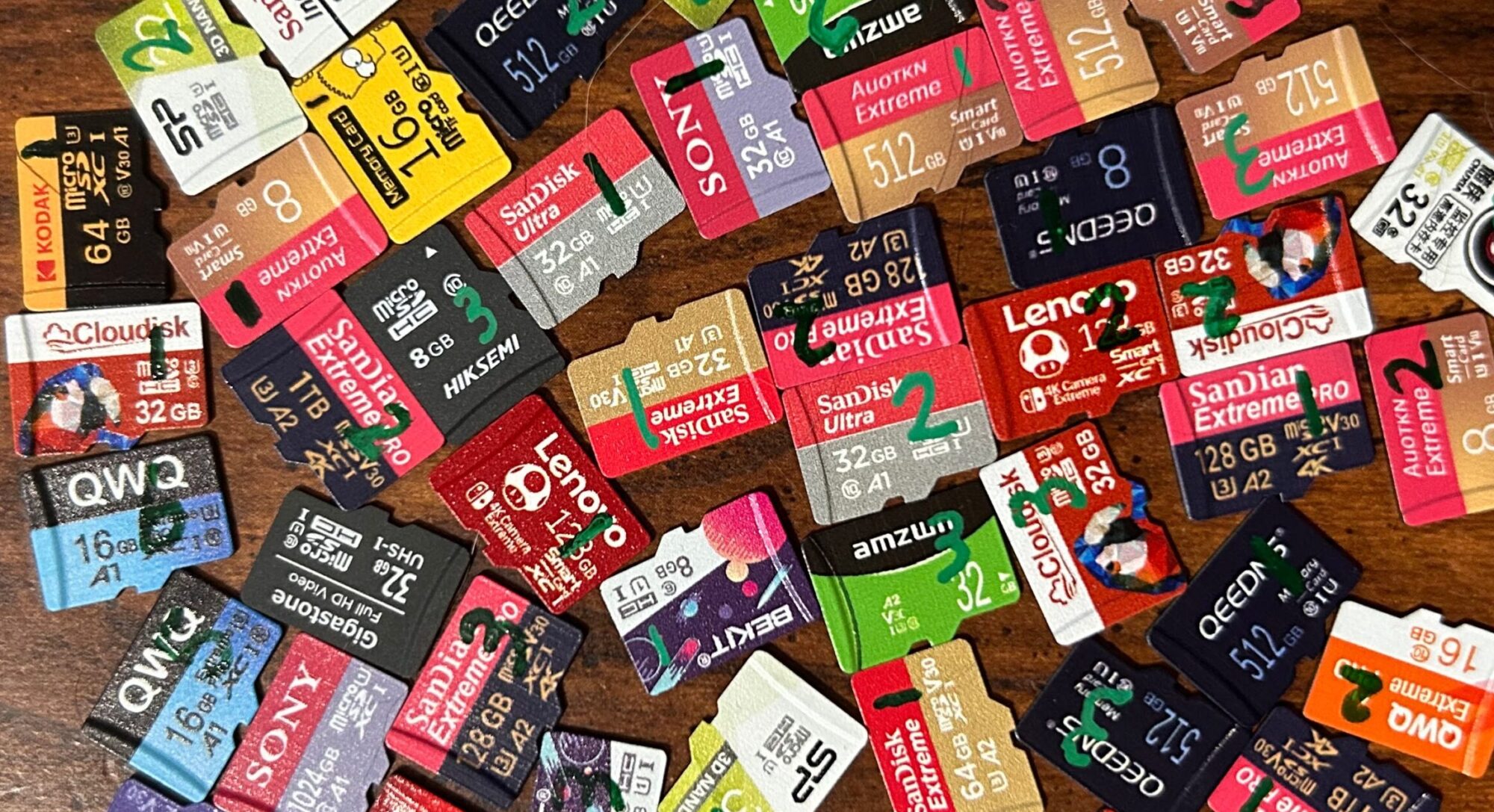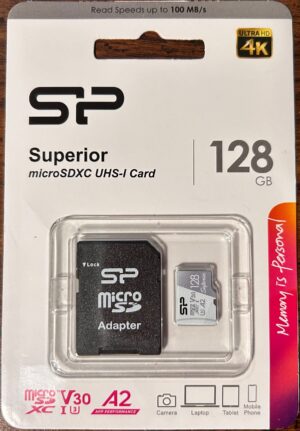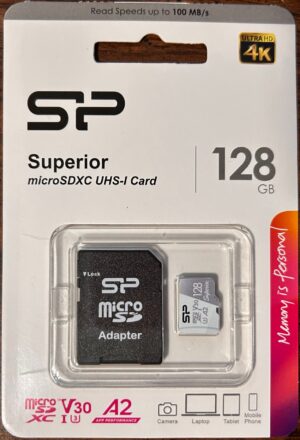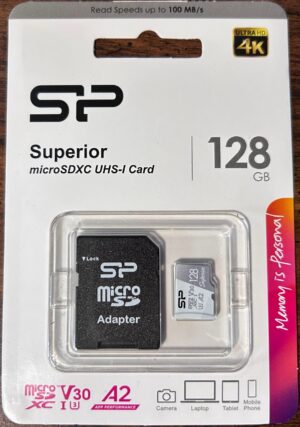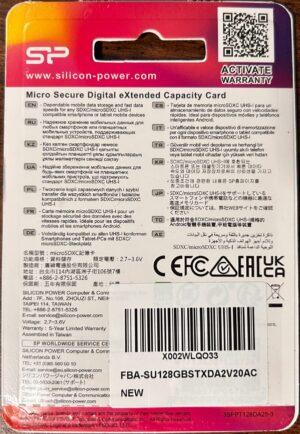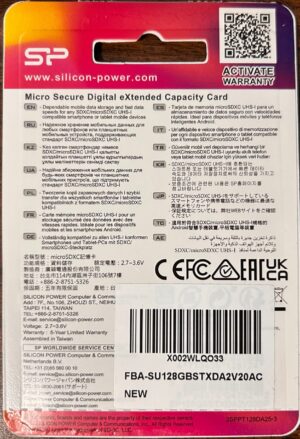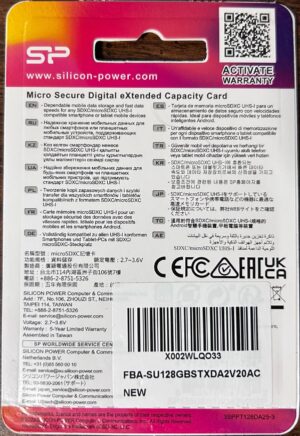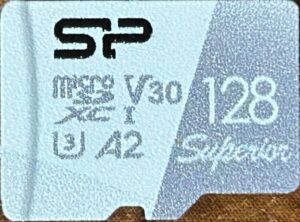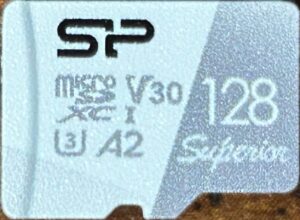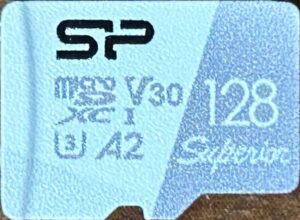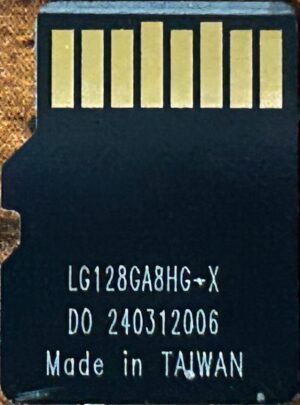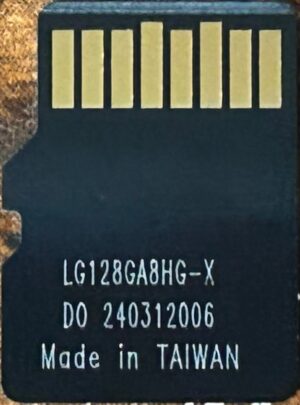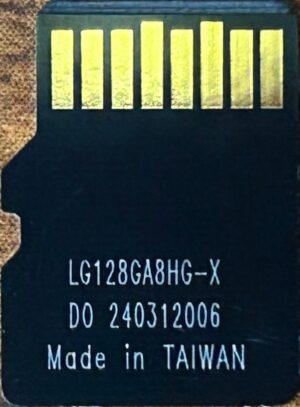- Obtained from: Amazon
- Price paid: $10.97
- Advertised size: 128GB
- Logical size: 124,383,133,696 bytes
- Physical size: 124,383,133,696 bytes
- Fake/skimpy flash: Skimpy (2.83% skimp)
- Protected area: 134,217,728 bytes
- Adjusted skimp: 2.72%
- Speed class markings: U3, V30, A2
- CID data:
- Manufacturer ID:
0x9f - OEM ID:
0x5449(ASCII:TI) - Product name:
0x5350434320(ASCII:SPCC) - Product revision:
0x20
- Manufacturer ID:
Discussion
After the disappointing results from the SP Elite, I wanted to know if Silicon Power was the issue, if the SP Elite was the issue, or if 3D NAND in general was the issue. To try to narrow down the issue, I picked up these cards and the SP Superior Pro 128GB.
In terms of performance, this card does perform better than the SP Elite — about 40% better in sequential write speeds and about 80% better in random read speeds. This makes it good, but not great — as of the time of this writing, this card’s best performance scores were its random read speeds, but those scores put it at about the 70th percentile in this category. Its overall performance, however, was only about average. Sadly, the average sequential write speed across all three samples was just below 30MB/sec — which isn’t good enough for the U3 or V30 marks that it carries. Additionally, it carries the A2 mark, which requires 4,000 IOPS/sec in random read performance and 2,000 IOPS/sec in random write performance — and these cards scored nowhere near that. I’ll give my standard disclaimer here — I didn’t test these cards under the conditions prescribed by the SD card spec; perhaps they would have performed better had they been tested under proper conditions. (However, I doubt that it would perform well enough to qualify for the A2 mark.)
On the endurance testing front:
- Sample #1 was doing just fine until it got to round 2,031, when it began experiencing a couple of I/O errors. After just the second reset attempt, it stopped responding to commands altogether.
- Sample #2 was also doing just fine until it got to round 2,192, when it suddenly stopped responding to commands altogether.
- Sample #3 has not yet reached the 2,000 read/write cycle mark. It is currently expected to get there sometime in October 2025.
June 17, 2025 (current number of read/write cycles updates automatically every hour)
